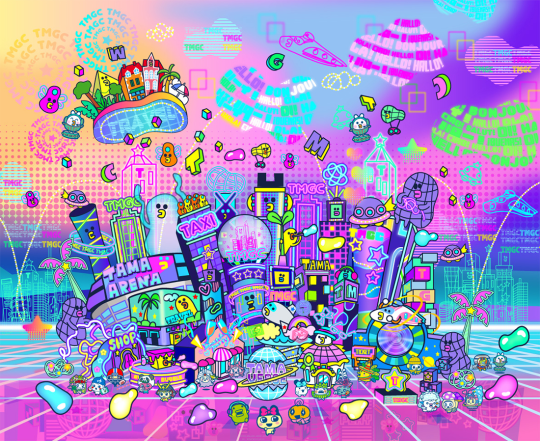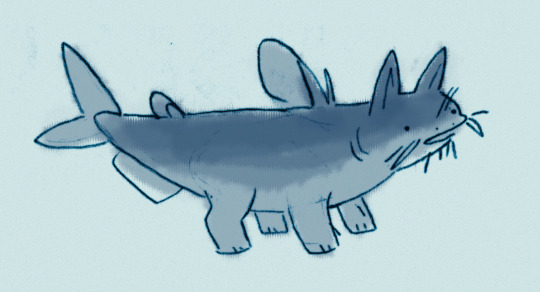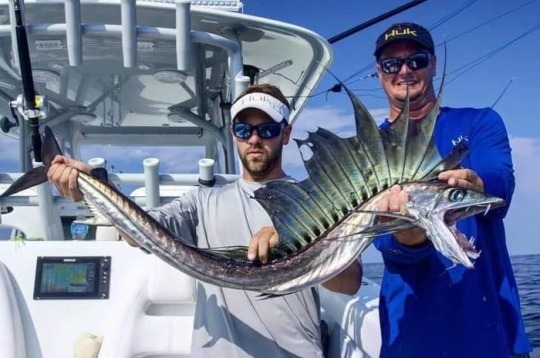#speculate
Explore tagged Tumblr posts
Text

According to the FCC Report there are ten Uni devices listed,...
So far, we've had:
-pink
-purple
-blue
-the two private ones for influencers
-Sanrio
-Angel
-Monster
So that leaves two more to come.
Shall we speculate?!
I'm hoping for an Ocean theme.
What do you think will be next?
#tamagotchi#tmgc#cute#tama#tamablr#toys#uni#tamagotchi uni#speculate#guess#coming#next#wonder#fcc#patent#bandai#hope#hoping
10 notes
·
View notes
Text

eldannypino Inflection point for Román in episode one of @hotelcocainemgm.
Directed by the maestro Guillermo Navarro.
New episode Sunday on @mgmplus
#HotelCocaine
X
A turning point for Román too. He had no choice though. Zulio would pin him of any number of things. Now…he still may be pinned with a number of things since things didn’t go well. 🤷🏼♀️
I know what’s coming in the second episode but any predictions for the future of Román?? Reblog/send in asks if you want to talk predictions!
3 notes
·
View notes
Text


I know Bluey it's supposed to be a kids show and even the others are fiction made for kids but come on who doesn't like think about a lore of Winton being a demi god?
#headcanon#theory#speculate#bulldog#car#racing games#nights#nights into dreams#nights journey of dreams#sega#sonic#sonic unleashed#chip sonic unleashed#jake the dog#adventure time#light#light gaia#superhero cape#parallels#multiverse#putting pieces together#bluey winton#bluey stories#dreams#powers
6 notes
·
View notes
Text
Before the next chapter to this comes out, I want people to guess what the drama was.
Spoiler:
What could be Margaret and Twilight's past drama?
#bet#fan fiction#fanfic rec#let's discuss#regular show#my little pony#crossover#twilight x mordecai#mordetwi#mordecai regular show#predictions#twilight sparkle mlp#guess what#ao3 link#ao3#archive of our own#ao3 fanfic#fanfiction#speculation#speculate
2 notes
·
View notes
Text





what if instead of horses we domesticated porcines... i think that could be cool
32K notes
·
View notes
Text













Finally now that the comic is fully public on comicfury, I get to share it with all of you here, too <3
If you enjoyed, please consider supporting by buying a PDF of the comic on itch.io: https://tawnysoup.itch.io/home-in-the-woods
#I'd rather not clutter the caption so I'll ramble a little in the tags#HitW is short but special to me as it represents and encapsulates some hard life experiences I was going through at the time of its creatio#Ofc in a more metaphorical manner! but. I have been very much enjoying reading people's comments and speculation as its been posting#the interpretations are so meaningful and varied and i love that and really want to encourage anyone to reflect on what it means to them#for me making this comic was a way to process and move past trauma. i feel like it ends anti-climactically but i wanted to be true to#where i thought things were actually going in my life moreso than to veer towards impact. ultimately im glad i managed to finish it#and for it to finish going public right before the new year? maybe i can see this as shedding that old pain in time to become something new#so thank you for reading for supporting and for still being here. lets wake up to 2025 with wind in our sails#Home in the Woods#my art#my comics#original comic#cw guns#cw blood#cw body horror
35K notes
·
View notes
Text
I love you speculative biology. I love you worldbuilding projects. I love you creature design. I love you fantasy biology. I love you speculative evolution. I love you science fiction.
#speculative biology#speculative evolution#creature design#scifi#rosie rambles#all tomorrows#the birrin#subnautica#humanity lost#the epic of serina
17K notes
·
View notes
Text
The interesting thing is…. from the glimpses of SOUL-less Kris we saw in Chapter 1 + 2, it was notable how…. strangely they seemed to move. We saw them walking with a sort of zombie-like gait that maybe implied they weren’t in full control of their body still, or maybe just that they were in immense pain.



It led to a lot of people speculating that Kris does need a SOUL to some level. Maybe the SOUL is Kris’ but we’re a foreign entity that has taken it over, or that Kris’ original actual SOUL has been removed and replaced with us. If Kris needed the SOUL to live, that would explain their slow, deliberate movements and also why they keep putting us back inside despite clearly hating being under our control.
So now, with Chapter 4 giving us a much better glimpse of SOUL-less Kris doing stuff… it’s notable that they seem… fully capable of moving ‘normally’. Angrily, but normally.


Even when they do the whole Creepy Zombie Walk thing they are notably faster than they seemed to be in Chapters 1 + 2

They can do things that require fine motor skills, focus and swiftness like playing the piano, handling glasses, and beating the shit out of us with a hockey stick and it's all animated as smoothly as most other Deltarune Animations. Not really implying effort or stiffness the way that original Creepy Zombie Walk animation did.



And while Susie only gets a brief moment to interact with SOUL-less Kris in the Normal Route

Noelle has prolonged interactions with them in the Weird Route (both on-screen in Chapter 4 and off-screen in-between Chapters 2 and 3) and... while she does note that they sounded 'weak and shaky' and obviously their behavior seems weird on account of the whole 'traumatized by the Unkillable Evil Time-Demon only they can see" thing

... There's nothing to really indicate that there's anything outright unnatural or 'zombie-like' about the way Kris moves and interacts with her while SOUL-less. Since this is the Weird Route, Noelle even note this is the most natural and Kris-like they've acted in the last few days.... until we take over again.
And now we know they can go without the SOUL for a fairly prolonged period of time. The Ominous Phone Voice of Probably Carol does tells them they need the SOUL, it seems unclear why.

So… what that means for SOUL-less Kris’ behavior before? It’s possible that even if Kris can operate without a SOUL, it still hurts like hell. So right after tearing out the SOUL they are in Maximum Pain and it's hard to ignore, causing them to move in a struggling and slow manner. But the more they go without it, they kinda get used to it and the pain fades into the background - allowing them to do stuff more-or-less normally.
(Basically Kris has Chronic Pain but the only Painkiller that works for them is Demonic Possession)
…Or, knowing Kris, maybe this… was all an act. They were only behaving like This because they knew we were watching. It is pretty notable that they walk around normally in the Holidays' Kitchen while we're eavesdropping on them and only swap to the Creepy Walk Animation once they notice us....


Maybe this is an act, either to make us underestimate the things Kris could do SOUL-less… or because they’re a little teen Edgelord so they just enjoy playing up the whole Soulless Zombie thing when they have a chance.
#deltarune#deltarune chapter 4#kris deltarune#utdr#delatrune#deltarune spoilers#deltarune speculation#deltarune theory#deltarune thoughts#deltarune chapter 4 spoilers#deltarune chapter four#kris dreemurr#deltarune kris#dr kris#soul deltarune#deltarune soul#red soul#player deltarune#delta rune#deltarune player#weird route#snowgrave#snowgrave route
6K notes
·
View notes
Text

i think creepers are herbivores who get their chloroplasts by eating plants and then photosynthesize by themselves. like sea slugs
18K notes
·
View notes
Text
Fans Speculate Various Theories As Justin Bieber Unfollows Usher
justin bieberHis recent social media move has sparked a wide range of reactions from fans after he reportedly unfollowed his longtime friend and mentor. Usheron Instagram. Meanwhile, other fans think Bieber is trying to get attention after reports revealed he plans to make a musical comeback in 2025. Article continues below Justin Bieber stops following Usher on Instagram Eagle-eyed social…
0 notes
Text

here's something stupid: the catcatfish


some quick facts:
they're nocturnal and tend to roam around while awake.
they have keen senses of smell and hearing, but terrible eyesight. despite this, they also have a tapetum lucidum, making their pupils "glow" in the dark.
their fur is short, dense, and oily to waterproof them.
they prefer a diet of mostly meat and are attracted to strong-smelling food like fish, cheese, and anything fermented.
the elongated dewclaw on each front paw is sharp, flexible, and nonretractable. it injects a venom that causes respiratory failure and cardiac arrest in prey and, in extreme doses, humans. veterenarians typically remove the dewclaw venom glands during the neuter/spay procedure.
they grow to an average of 1m and 23kg (3ft and 50lb) but can reach up to double that length and triple the weight!


#drew these bad boys in ichthyology lecture 🐟#art#sketch#orig#meme redraw#cat#fish#catfish#blue catfish#fantasy species#original species#hybrid#animal hybrid#speculative biology#catcatfish
42K notes
·
View notes
Text
Y’all want Taylor Swift to be gay so bad but you won’t even write femslash about her
#I was curious so I looked it up 1038 fics on ao3 tagged Taylor Swift and f/f#like I’m not necessarily encouraging people to go out and write rpf#but it’s wild that arguably the biggest musical artist right now who has a huge community speculating about her sexuality has so little fic#like this isn’t a good or bad thing I just think it’s interesting#idk I’m not actually a swiftie like that#like I listen to her music and keep up generally with what she’s doing but I’m not really in the fandom#so there might be something I’m missing
33K notes
·
View notes
Text


My take on unicorns! I'd really love to make a mythical creature field guide someday, since the Spiderwick Field Guide is what inspired me to start drawing in the first place 🥰
#also I actually drew this in like. March lmao#I just kept telling myself I was gonna do a full painting of them in their natural environment and then I kept putting it off#until I realized I didn't actually wanna do that 😂 maybe someday if I get a chance to make that book then I'll do it#my art#unicorn#junicorn#speculative biology#unicorn art
28K notes
·
View notes
Text

biology of a stapler
#speculative biology#stapler#mine#my art#spent the whole day stapling objects and it gave me ideas#anatomy
56K notes
·
View notes
Text
The Lancetfish is a species that looks like it comes straight out of a realistic fantasy world building project.

#speculative biology#speculative ecology#speculative evolution#speculative zoology#traditional art#traditional sketch#spectember#specposium#paleontology#fanart#paleo meme#paleo art#paleontologist#paleostream#paleobird#paleomedia#paleoblr#paleoillustration#paleoart#worldbuilding#world#fishing#world building#fantasy#realistic fantasy#fish#lancet fish#lancetfish
71K notes
·
View notes